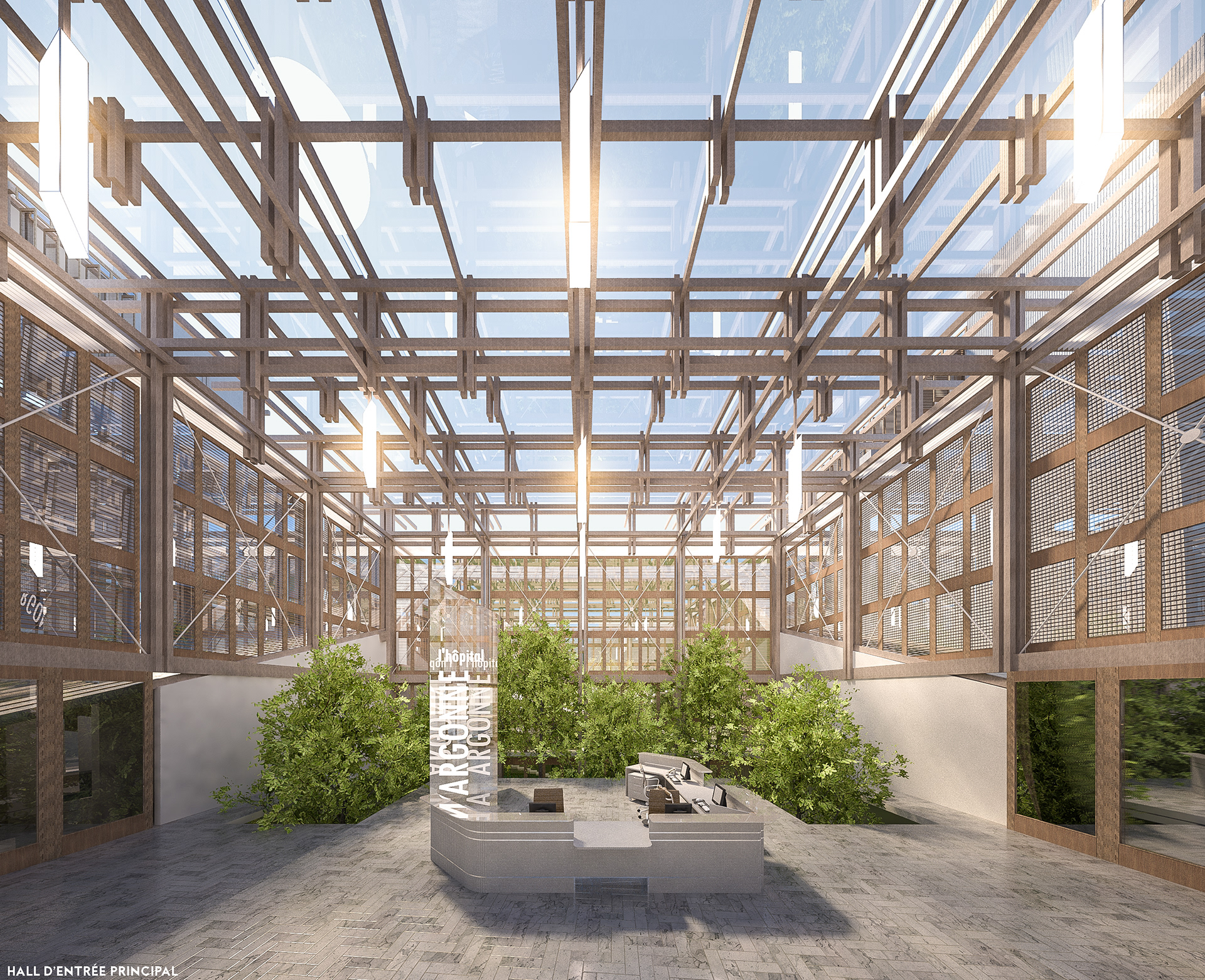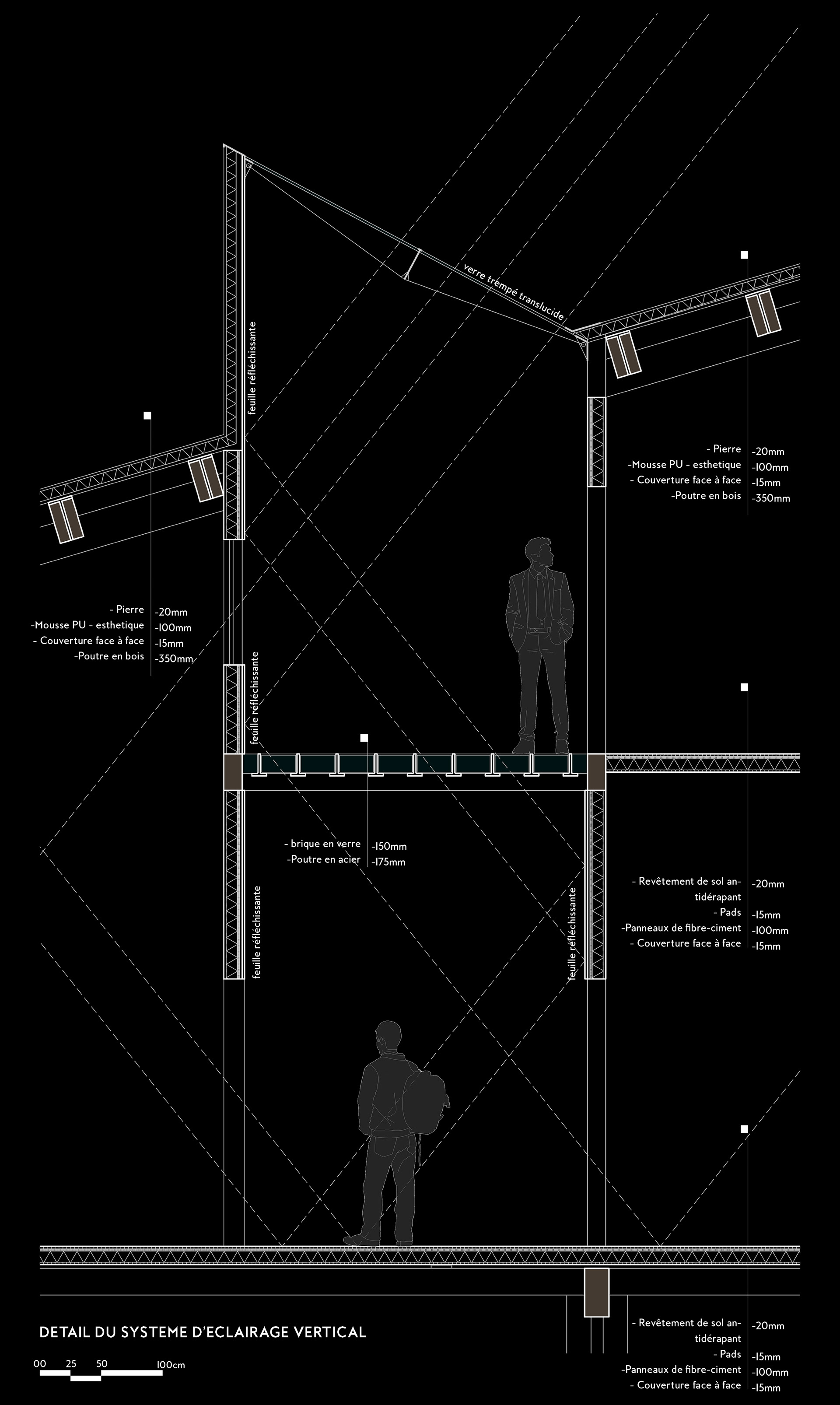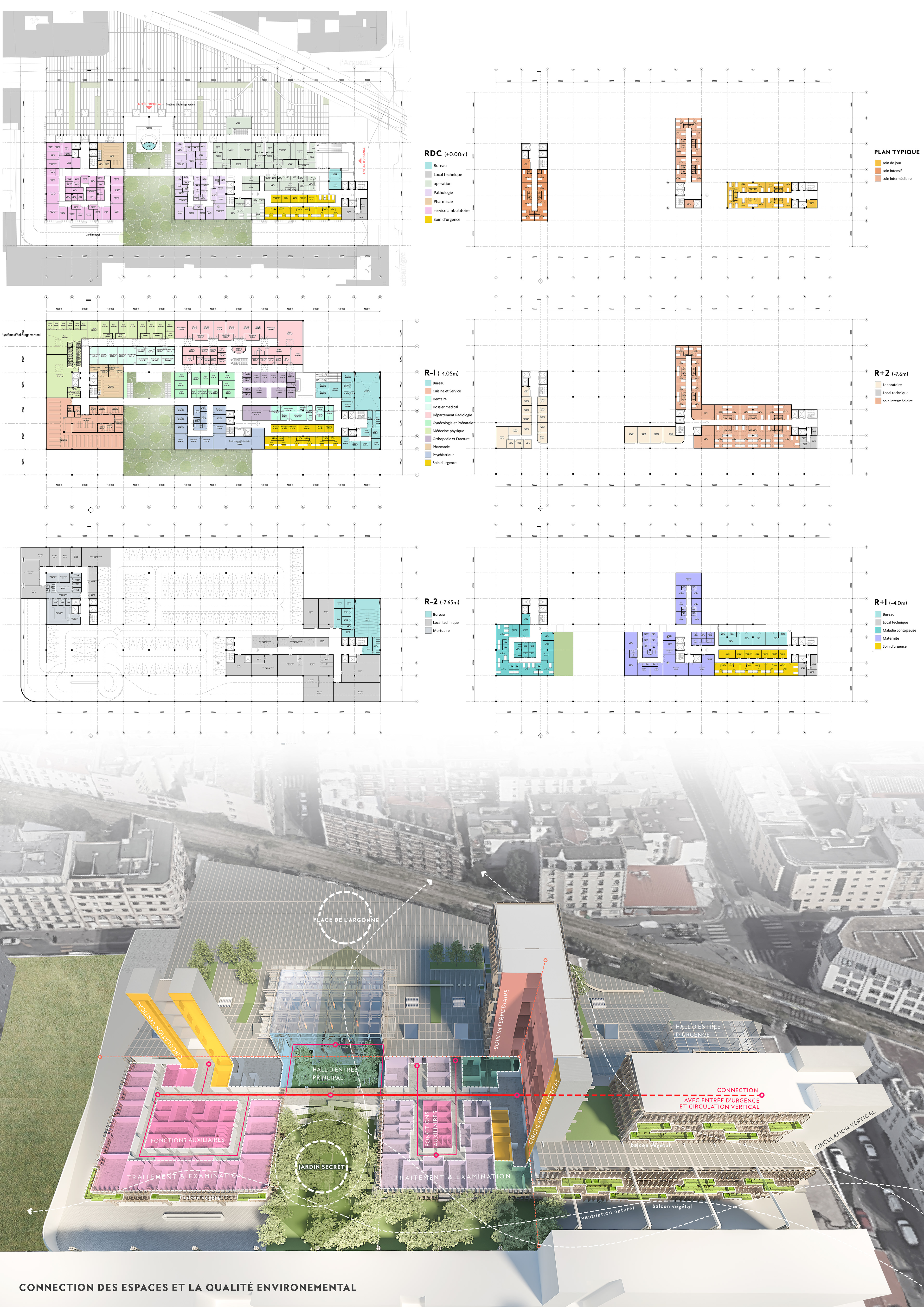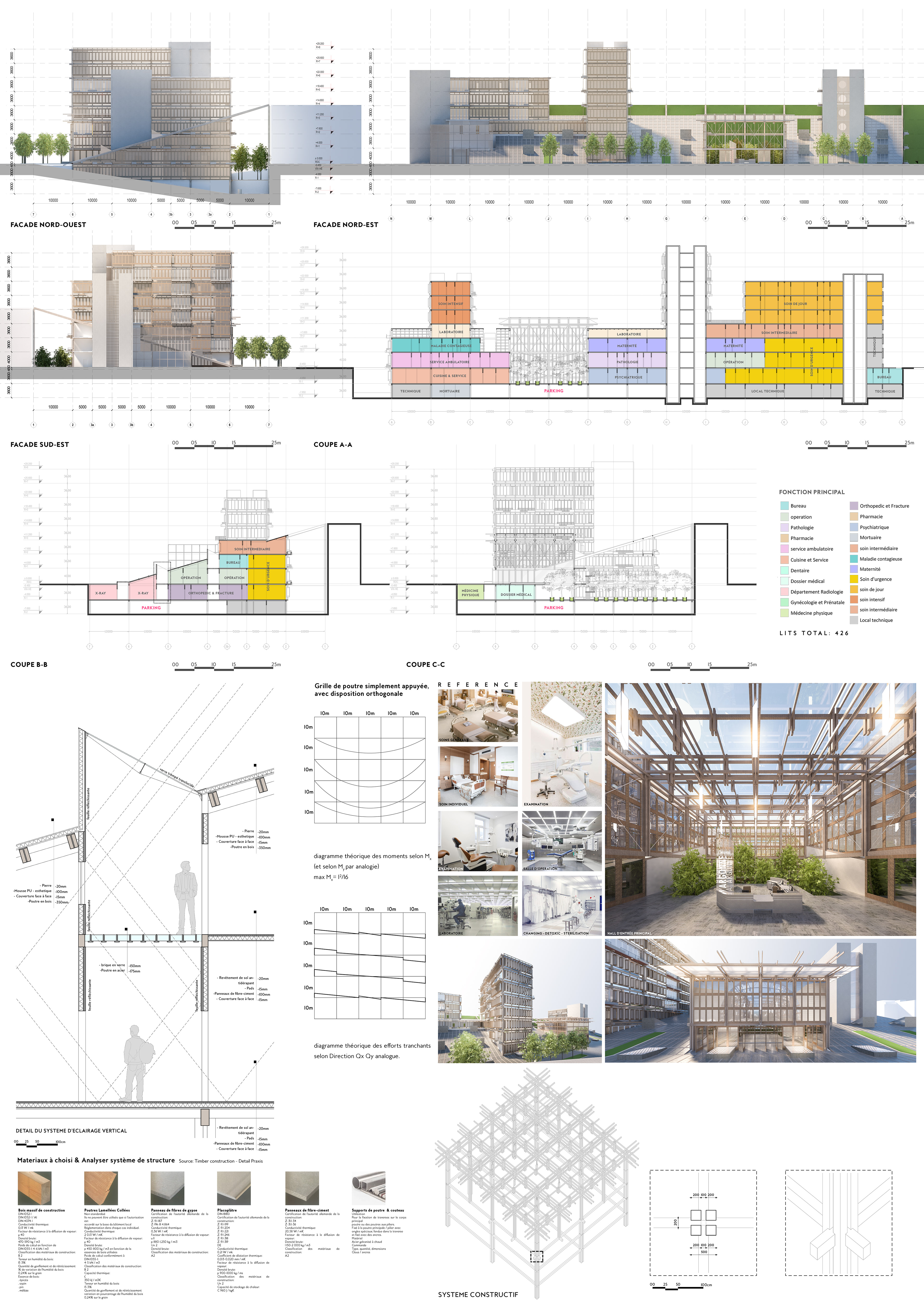L’institut hospitalier à Paris
L’hôpital anciennement lieu d’accueil de la population fragilisée par son statu social (pauvreté) ou par une maladie, c’est un miroir qui reflètent les défaillances et les problèmes dont souffrent notre société.
Dans l’histoire, l’institut hospitalier fut appelé « hôtel dieu », on y trouvait un dans chaque ville, il s’agissait à l’époque d’un hospice géré par l’institution religieuse. Cette réalité n’a pas changé même après l’affirmation de sa fonction principale c'est-à-dire : la fonction soignante.
L’institut hospitalier est un lieu de contrôle social mais aussi de rapport de forces entre les soignants et les soignés, un lieu de hiérarchies selon des normes et des réglementation entre médecins, personnel soignant, personnel administratif, et le corps médical d’autre part et ceci afin d’offrir les meilleurs soins aux individus malades ou accidentés.
Aujourd’hui, Paris compte une vingtaine d’hôpitaux publics, tous dans le giron de l’AP-HP (assistance publique-hôpitaux de Paris) dispersés non équitablement sur tous les arrondissements : Le 19 eme arrondissement se retrouve dépendant des hôpitaux des arrondissements d’à coté (hôpital Robert Debré et hôpital Saint Louis).
Dans l’histoire, l’institut hospitalier fut appelé « hôtel dieu », on y trouvait un dans chaque ville, il s’agissait à l’époque d’un hospice géré par l’institution religieuse. Cette réalité n’a pas changé même après l’affirmation de sa fonction principale c'est-à-dire : la fonction soignante.
L’institut hospitalier est un lieu de contrôle social mais aussi de rapport de forces entre les soignants et les soignés, un lieu de hiérarchies selon des normes et des réglementation entre médecins, personnel soignant, personnel administratif, et le corps médical d’autre part et ceci afin d’offrir les meilleurs soins aux individus malades ou accidentés.
Aujourd’hui, Paris compte une vingtaine d’hôpitaux publics, tous dans le giron de l’AP-HP (assistance publique-hôpitaux de Paris) dispersés non équitablement sur tous les arrondissements : Le 19 eme arrondissement se retrouve dépendant des hôpitaux des arrondissements d’à coté (hôpital Robert Debré et hôpital Saint Louis).
-
The hospital institute in Paris
The hospital, which used to welcome people weakened by their social status (poverty) or by illness, is a mirror that reflects the failings and problems from which our society suffers.
In history, the hospital institute was called "hotel dieu", there was one in every city, it was at the time of a hospice managed by the religious institution. This reality has not changed even after the affirmation of its main function, that is to say: the nursing function.
The hospital institute is a place of social control but also of balance of power between caregivers and patients, a place of hierarchies according to standards and regulations between doctors, nursing staff, administrative staff, and the medical profession on the other hand. and this in order to offer the best care to sick or injured individuals.
Today, Paris has about twenty public hospitals, all within the bosom of the AP-HP (public assistance-hospitals of Paris) dispersed unfairly over all the arrondissements: The 19th arrondissement finds itself dependent on the hospitals of the arrondissements. next door (Robert Debré hospital and Saint Louis hospital).
In history, the hospital institute was called "hotel dieu", there was one in every city, it was at the time of a hospice managed by the religious institution. This reality has not changed even after the affirmation of its main function, that is to say: the nursing function.
The hospital institute is a place of social control but also of balance of power between caregivers and patients, a place of hierarchies according to standards and regulations between doctors, nursing staff, administrative staff, and the medical profession on the other hand. and this in order to offer the best care to sick or injured individuals.
Today, Paris has about twenty public hospitals, all within the bosom of the AP-HP (public assistance-hospitals of Paris) dispersed unfairly over all the arrondissements: The 19th arrondissement finds itself dependent on the hospitals of the arrondissements. next door (Robert Debré hospital and Saint Louis hospital).
Etude du site , contexte, facade, typologies des elements d'architecture et materiaux
-
Study of the site, context, facade, typologies of architectural elements and materials
Développement de l'idée du projet
-
Development of the project idea
Présentation du site
La parcelle d’implantation est située à la Villette au 19eme arrondissement de paris, longeant la rue Argonne, il s’agit du lot cadastral n°28, actuellement elle est occupée par un centre de financement en plus d’un centre de formation, elle est bordée au :
1-Nord-ouest par : Résidence universitaire Argonne
2-Nord-est par : place Argonne + pont de Flandre
3-Sud-ouest par : ENSAPLV
4-Sud-est par : Ecole Barbanègre
La parcelle est relativement rectangulaire
Sa superficie est de 8202 m²
-
Site presentation
The implantation plot is located in La Villette in the 19th arrondissement of Paris, along rue Argonne, it is cadastral lot n ° 28, currently it is occupied by a financing center in addition to a training center, it is bordered at:
1-North-west by: Argonne university residence
2-North-east by: place Argonne + pont de Flandre
3-Southwest by: ENSAPLV
4-South-east by: Ecole Barbanègre
The plot is relatively rectangular
Its surface area is 8202 m²

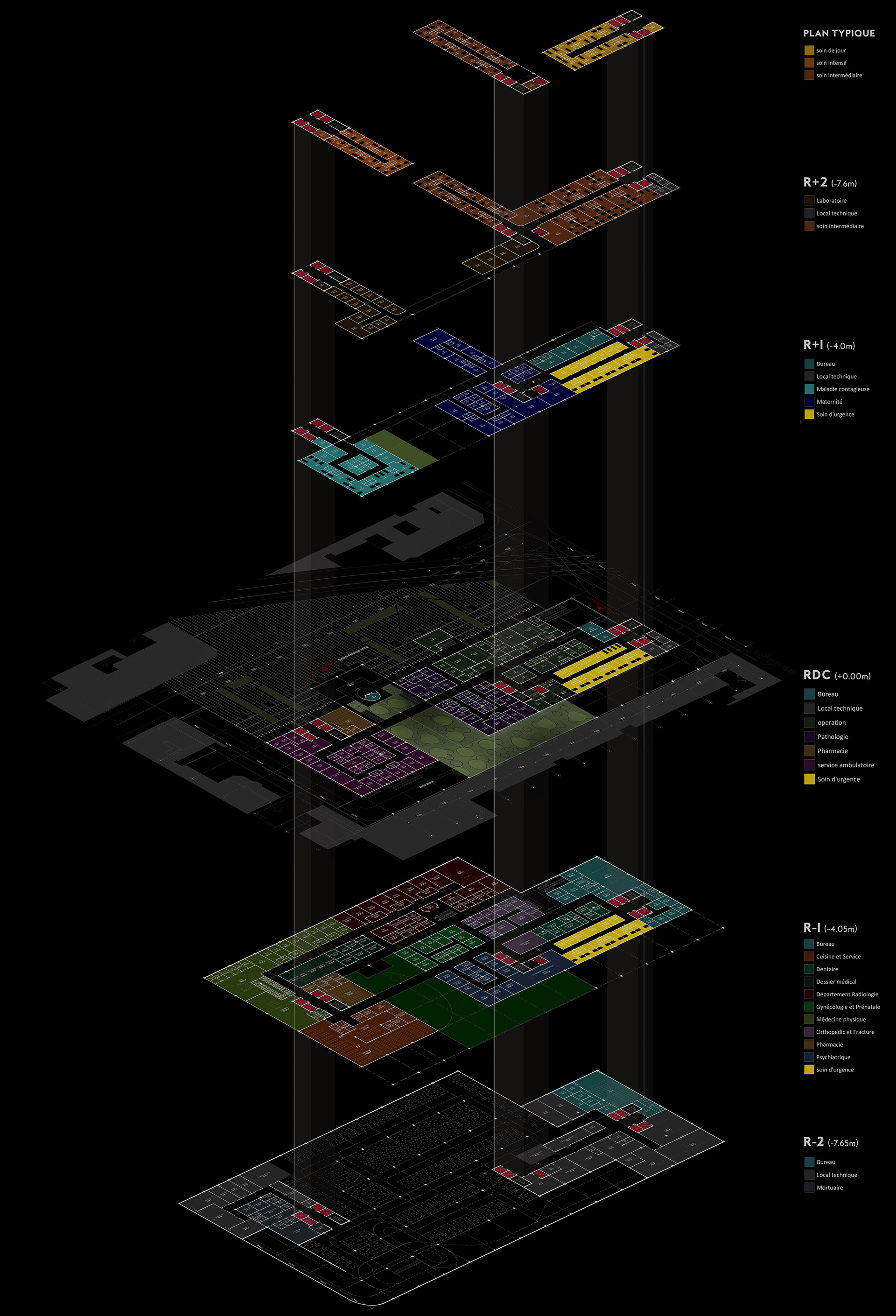
Plan de masse et l'anatomie de program du projet
-
Ground plan and anatomy of the project program
Ground floor plan
First floor plan
Basement floor plan
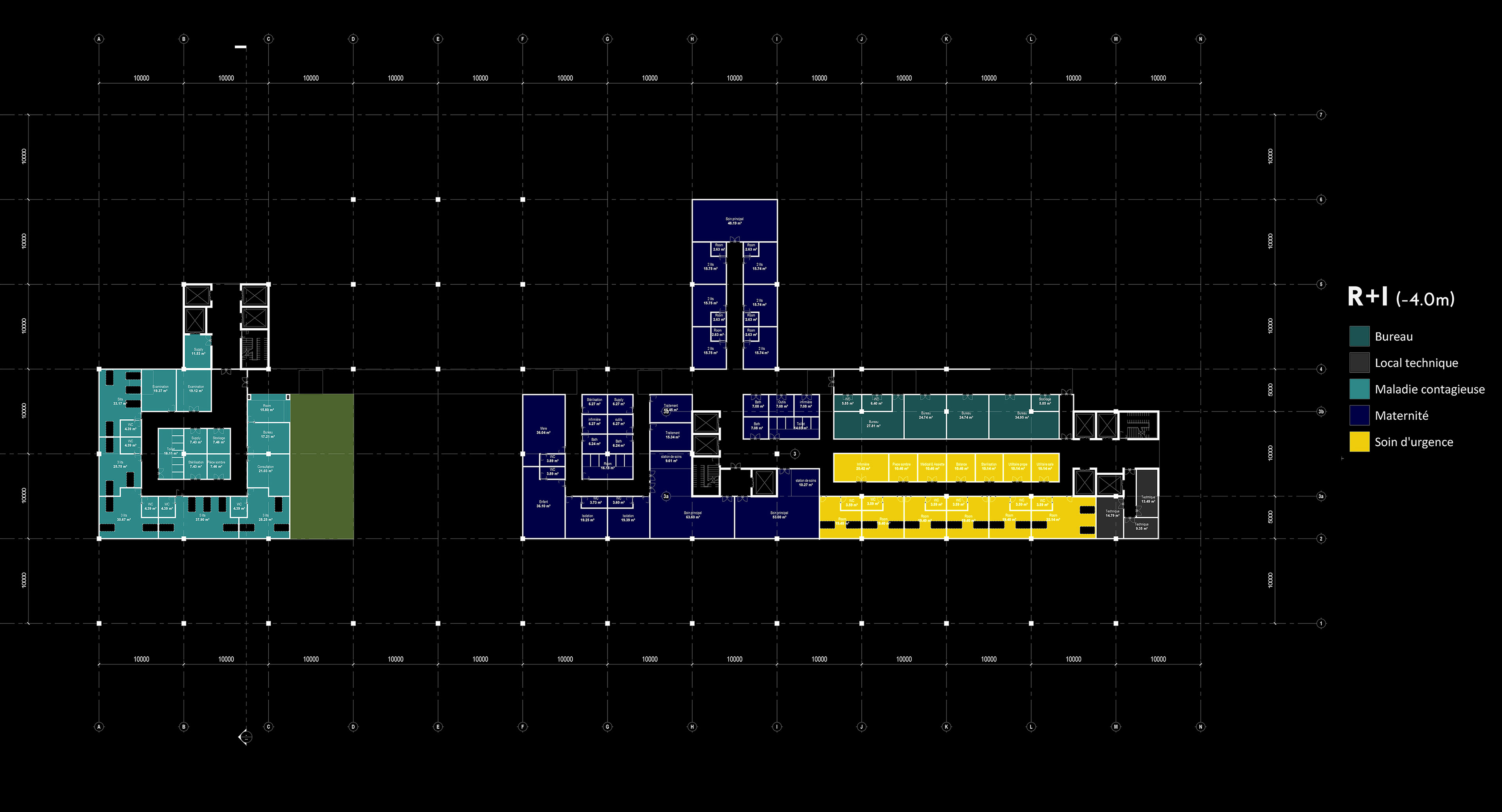

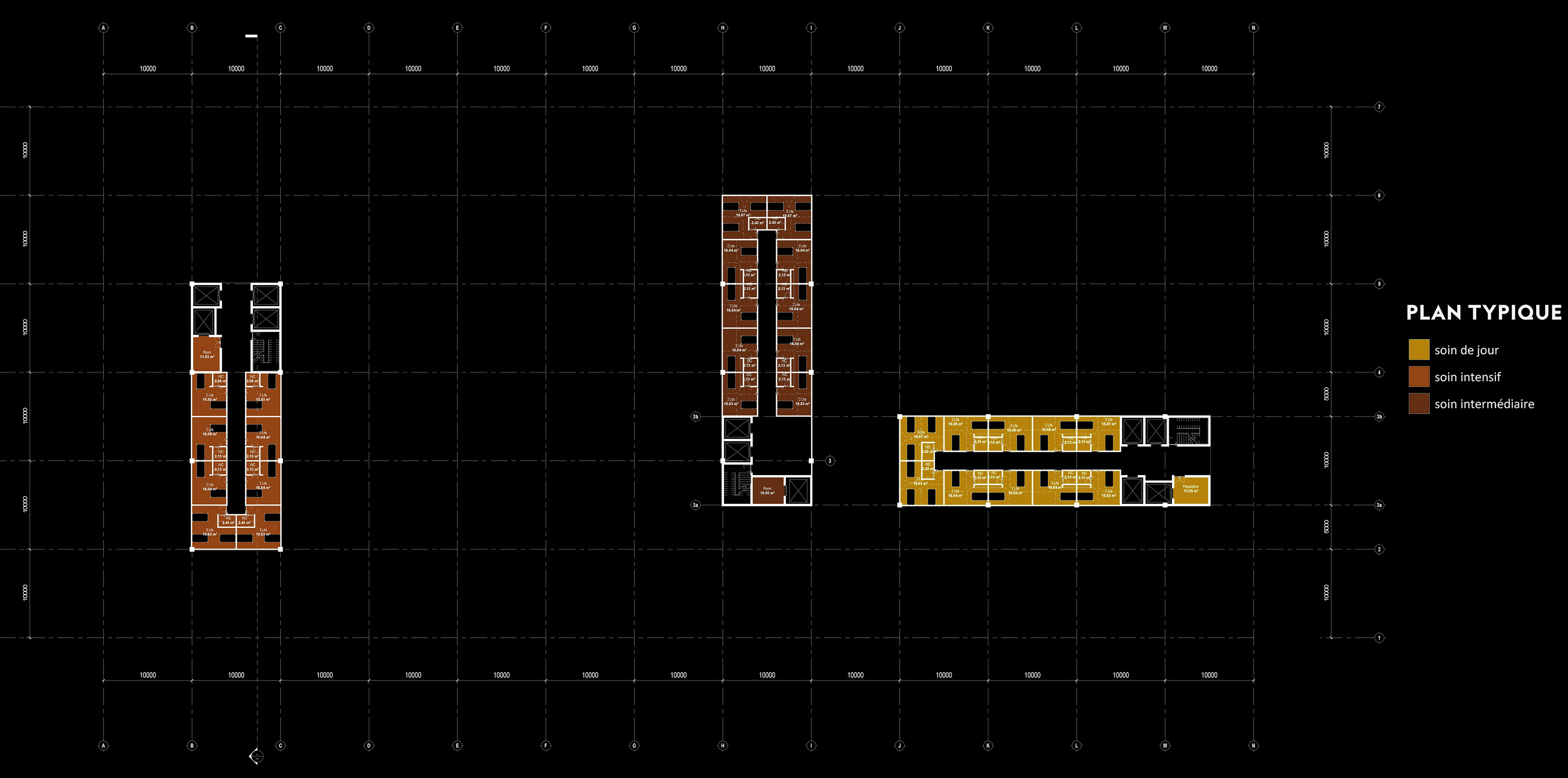
Second, thirst floor plan & typical floor plan
